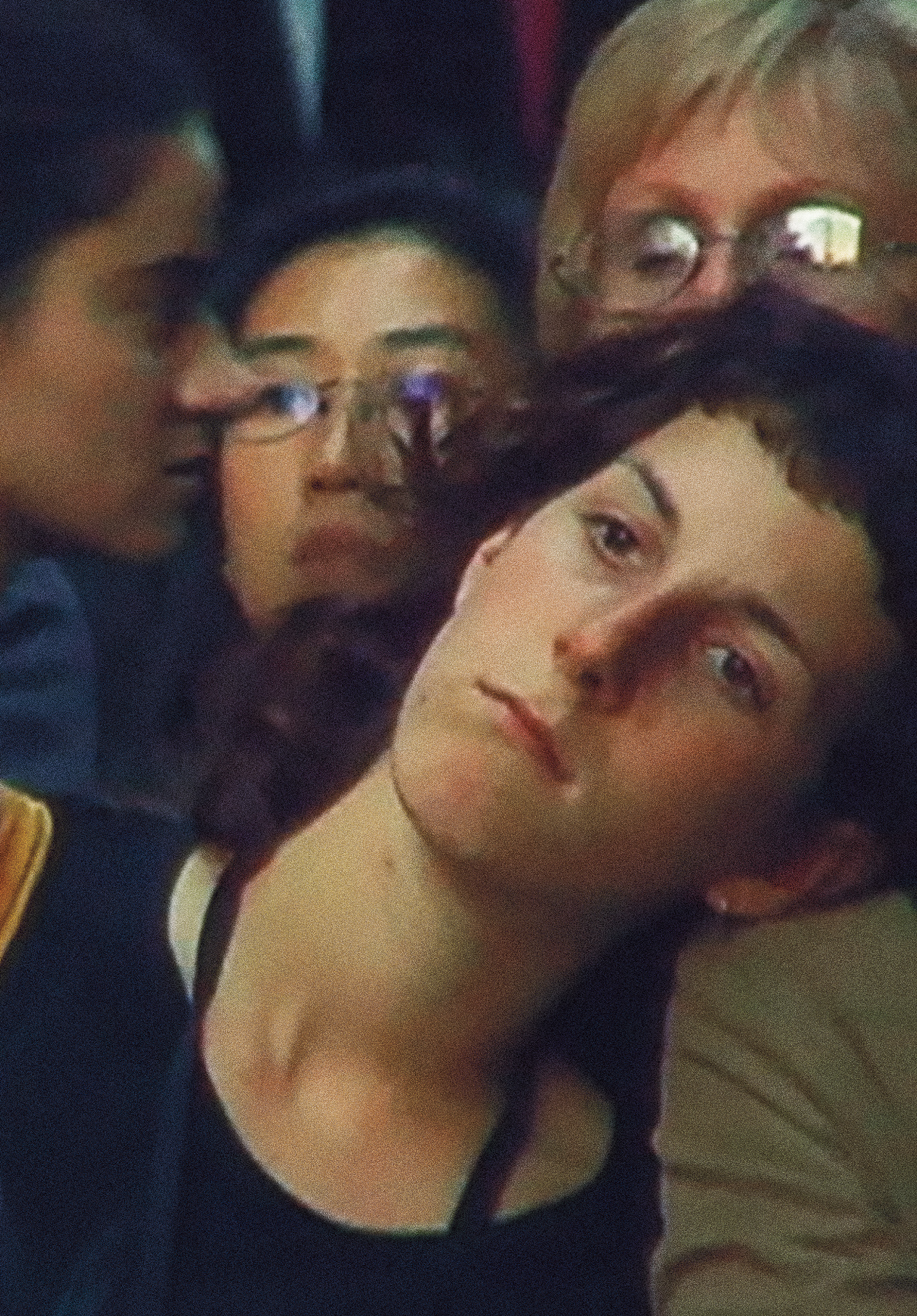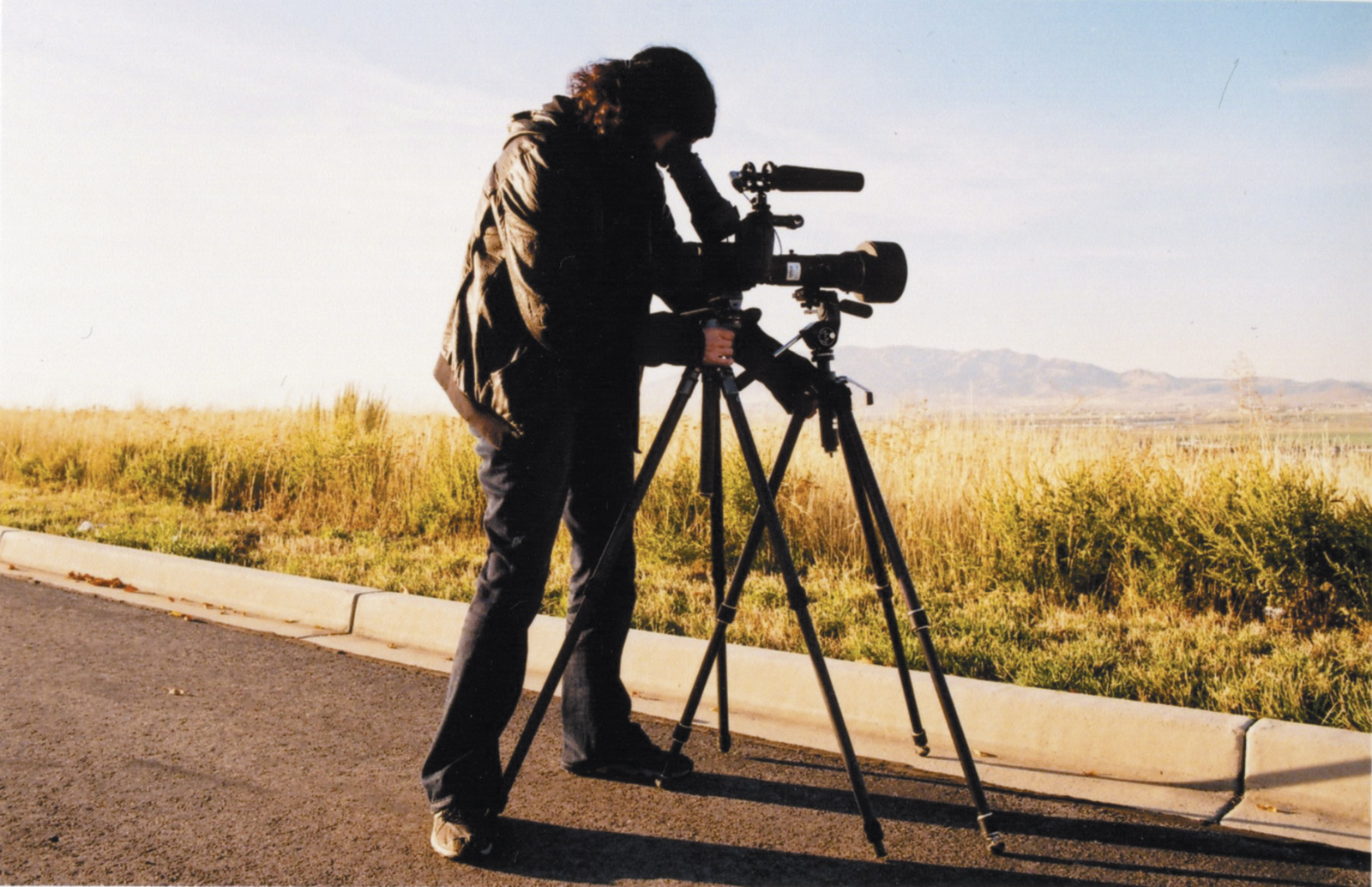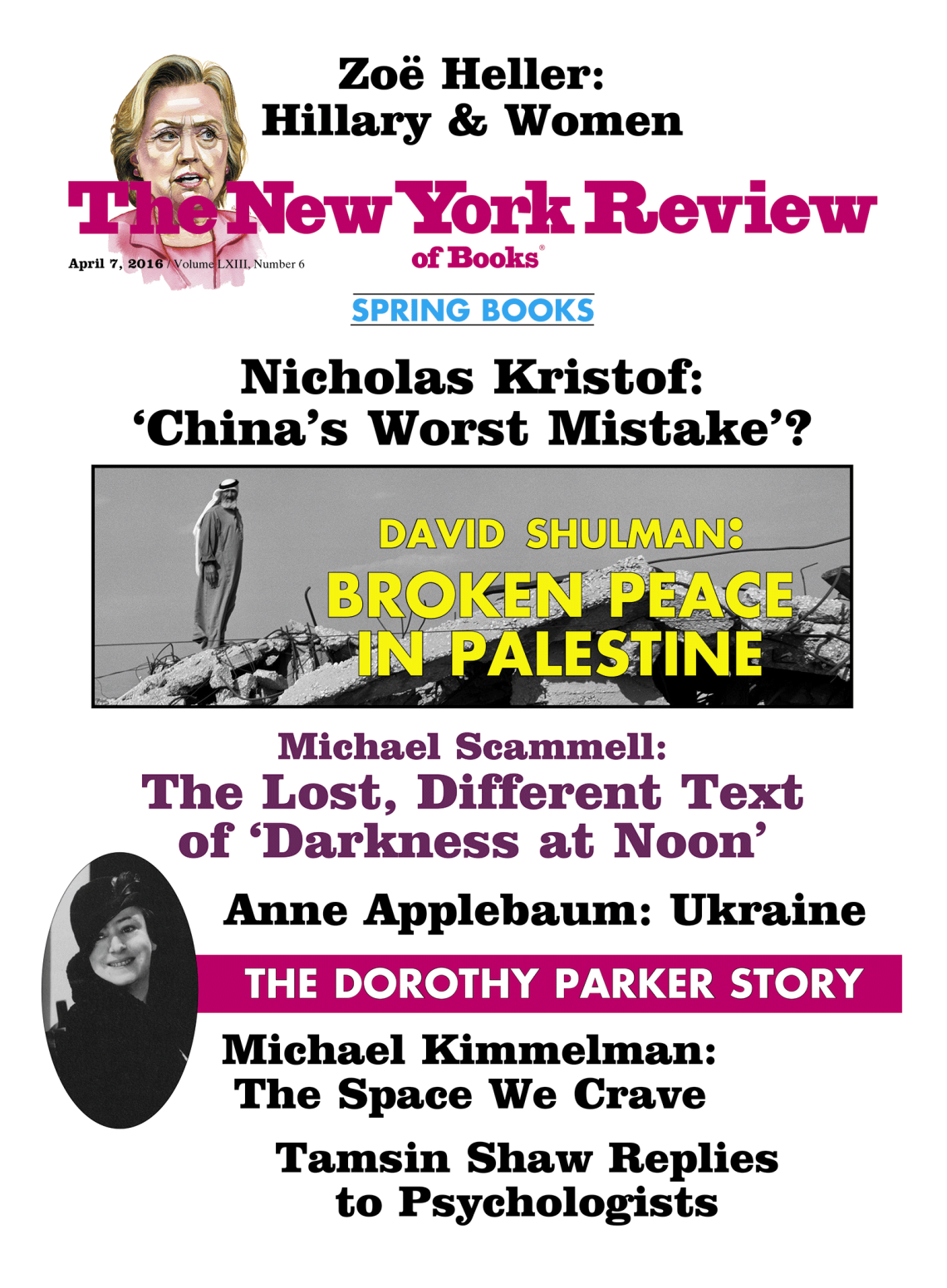Installation art is a mixed genre. It can be contemplative in ways denied to a picture hanging on a wall or a film projected on a screen. At the same time it lends itself to provocation, to “confrontational” ambitions: the spectator may be startled by light or noise, or subjected to a calculated deprivation of stimuli. “These objects,” it seems to say, “are chosen and reconstructed pieces of your world. Taken together, do they somehow change your idea of the world?”
Laura Poitras’s “Astro Noise,” now installed at the Whitney Museum, concerns the systems of secret surveillance that have proliferated since the attack on the World Trade Center in 2001. The exhibition offers an incitement to thought in a new medium by Poitras: a dissident expatriate who won a Pulitzer Prize for articles explaining the NSA documents revealed by Edward Snowden and an Academy Award for her documentary film about Snowden entitled Citizenfour. You are met on the eighth floor—it is the most somber and deliberate of greetings—by a slow-motion video of people who seem to be spectators much like yourself. They are looking up from a sidewalk at an enormous unnamed thing, apparently a building or some flying object, but you see only their faces, never the thing itself.
The footage is high-definition and drenched in colors sharply fixed. Little by little, with help from captions and context, you realize that these people are looking at the remains of the World Trade Center in the days after the catastrophe. The large vertical panel on which the film is projected has been entitled by Poitras O’Say Can You See, and it was a courageous decision to show nothing but the faces. We have seen the planes crashing and the buildings falling hundreds of times, but with what emotion?
These reactions of grief at the scene of suffering tell us something fresh about the experience of collective sympathy—its fathomless power and the compulsion by which it isolates and unifies. We feel alone even as we see that others are feeling the same. The people here are old and young, of many races, new to the city and native, fashionably dressed or humble in the extreme, but for the moment they are caught and held by a single emotion.
Or they almost are: we know that they have been held in the camera’s view longer than reality kept them, thanks to slow motion, and certain ones have been chosen instead of others through the economy of editing. In any case, this extraordinary and immersive montage is an experience impossible to shake when you leave the museum. One man lifts a camera to take a picture of the rubble and finds he can hardly bear to. Another simply shakes his head. There is a turbaned Sikh, and a young woman with an “I ❤ NY” button, and a mother pointing out to her daughter a detail of the soul-baffling sight.
All the while in the background, we can see other people walk by, indifferent for the moment in the usual uproar, sipping a soft drink, chatting with a friend, part of the “average unending procession,” as Whitman called it. The sounds that seem close to white noise at first gradually rise to a semblance of a mournful chorale: a slowed-down, recursive selection of notes from the national anthem, sung in Yankee Stadium at the fourth game of the World Series in October 2001.
The entire video loop for O’Say Can You See lasts fourteen minutes. It never tries to soften the emotion of sympathetic horror and horrified sympathy we share with these people. The look on their faces—overwhelmed, saddened, stricken—must be something like the look we had when we first saw the buildings burn and fall. As often as we saw it repeated, after all, we underestimated the effect.
On the other side of the same screen is a projection of a different kind. Here the production values are lower, the scene is entirely unfamiliar, and the requisite sympathy is harder to find. You are looking at a grainy and somewhat degraded black-and-white video. It lasts about ten minutes, and it shows, in the half-darkness, excerpts of an interrogation in Kandahar, Afghanistan, after the retaliatory attack by the US against al-Qaeda and the Taliban in October 2001.
Two Arab prisoners, in separate stretches of the film, are released from isolation into a sort of anteroom for questioning by American guards. The Arab men kneel on the floor, with bags initially placed over their heads, then removed and replaced again at the order of the guards. These soldiers, armed with rifles, are killing time, you get the feeling, before the official work by trained interrogators. Overt brutality is visible in nothing they say or do. And this was a remarkable feature of Poitras’s documentary trilogy about the “war on terror”: though all the films concerned American violence, and the effects of violence were shown close up, violent action was never depicted. She is interested in connecting emotion with thinking, and seems to have reckoned that the spectacle of violence itself aborts thinking.
Advertisement
The soldiers who watch the men are unsympathetic and reserved. “We want to ask you some more questions today,” one of them eventually says. Both of the Arab men are in chains. “Can I stretch my legs?” “Yes, a bit.” And then the questions: “When did you join al-Qaeda?” “I never joined al-Qaeda.” The other prisoner says: “I joined and left. I did not stay there.” One of the Arabs turns out to be Salim Hamdan in the early days of his captivity, before his transfer to Guantánamo and the process of his appeals and trial by a military court and the Supreme Court decision that led to his release seven years later. The room for the questioning is dark and the soldiers shine a flashlight on the men. With what purpose, who can say? Shining a flashlight in someone’s face is a thing nobody would think of doing, except to a person helpless under one’s control. At a barely detectable pitch—as hard to construe as the separate notes of the national anthem on the New York video—we are seeing the moral effects of organized cruelty.
These Arab men and others like them, we know, were held on vague and mostly false information concerning their identities; they were detained, even as the evidence against their guilt mounted, through long periods in solitary confinement. We are witnessing the beginnings of that; and it is a bewildering scene. Yet the permitted cruelty of the soldiers in this hidden place bears some relation to the pity in the faces of the people in New York. The immense weight of the shared sorrow is felt to absolve and exonerate all large and small actions taken to alleviate it. Consolation and revenge may be telescoped in the smallest of gestures half a world away.
Enter the third space of the exhibition and you are mystified. A video is being projected now on the ceiling and what it shows is a time-lapse recording of stars in the night sky—photographed, as oblique indications slowly make clear, in various locations in the Middle East and North Africa. A knee-high upholstered mattress, supporting about twenty persons at a time, has been laid in the center of the room to allow a relaxed view of the stars. This “projection environment”—as Poitras calls it in the book Astro Noise—is entitled Bed Down Location. The environment shows the stars in the sky over embattled tracts of landscape that are normally surveyed by American drones. In speeded-up motion, we do finally catch a glimpse of the drones, and a subdued hum of voices can be identified as the chatter of officers at the controls somewhere: Poitras wants the viewer, she says, “to enter an empathetic space and imagine drone warfare.”
But this video and its environment present a puzzle less intelligible than those offered by the videos of New York and Kandahar. We are not sure at any point what we are seeing and hearing, and even the book Astro Noise leaves this partly unspecified. The truth is that the emotion of a person lying down and gazing at a moving picture of the stars is nothing like the anxious knowledge of a person walking straight ahead on a family errand, say, somewhere in Yemen or Somalia, knowing there is a drone above that could in the next moment fire a missile. Here the wished-for empathy cannot really catch. To get anywhere close, you have to read Poitras’s directions and try to experience the appropriate measures of tension, apprehension, and anger.
But a probable motive for the Bed Down Location emerges in a short contribution by Edward Snowden to the book Astro Noise. In one passage in particular he associates the unduplicatable patterns of the stars, seen from a certain place at a certain moment, with the possibilities of secure encryption:
As the world turns, our antenna sweeps the vastness of the universe at a given point in time. The signals that we receive constitute an ever-changing key forged from the sky itself. Such a key could only be imitated by an agent listening from that exact same place, in that same direction, at that same time, to those exact same stars.
With this clarification in view, the total order of the exhibition makes sense. By a terrible but predicable logic, the pity shown by the people milling past and stopping to gaze at Ground Zero led to the dank floor of the interrogation cell in Kandahar, where no room for pity remained. Drones have become the proposed solution to economize violence and free us from overwhelming emotion. But the eyes in the sky that look to save us have destroyed our freedom, and can only themselves be defeated at last by the infinite resourcefulness of the imagination.
Advertisement
One cannot do justice to “Astro Noise” in less than an hour at the Whitney, but it is fair to say that the first three parts, the video projections so different in kind, are the heart of the exhibition, while the remaining three sections are in the nature of scholarly appendices. The section called Disposition Matrix aligns a series of slit-like windows through which the viewer can peer at classified documents, diagrams, and shorter videos that record episodes in the war on terror and the growth of the national security state. One must bend over and squint to make out the details of any of these smaller exhibits: a deliberate privation imposed on the spectator and meant as a bare reminder of the uneasy posture of the incarcerated at Bagram, Guantánamo, and elsewhere. One former prisoner talks of his experience of waterboarding, but, again, the violence is not shown. We also see caged men in Abu Ghraib, in a video from 2004, being told by an American guard that “there will be justice.” Does the guard say this impatiently? Ironically? So many of the feelings of the war on terror are obscure even to those who express them.
As for the documents: we are shown the 2002 memorandum that delivered the approval of the director of the CIA, George Tenet, for a plan of cooperative collection of “interrupted telemetry data” between the CIA and the NSA. The document is stamped “Top Secret.” Of course such a memorandum, giving permission to spy on American citizens, was itself dubiously legal, and it was signed according to a secret interpretation of a secret law. But still it says “Top Secret.”
As visitors to the exhibition, we are temporarily cast in the position of Poitras herself when documents of this sort were first conveyed to her by Snowden. Disposition Matrix has been designed with considerable care, and in its constrained production of limited views, one may note something like the self-imposed discipline of Robert Bresson in photographing A Man Escaped. The reach of the spectator in that film could extend only to what the prisoner saw, or what someone a short distance away could see of the prisoner. It is like that for us in these cramped corridors.
A series of graph-like color charts or abstract images, cumulatively entitled Astro Noise, are displayed on the way out and give the title to the exhibition as a whole. These pieces are strangely fascinating, the more so when you are told what they represent; for the pictures are drawn from the download by Snowden of a British Government Communications Headquarters (GCHQ) program, code-named Anarchist, in which (as Jay Sanders writes in the companion book) “intercepted signals from radar systems, satellites, and drones are processed and analyzed.” So the renderings are sinister in what they import, meaningless in what they denote to the viewer, and, to the innocent eye, fated to remain “pretty.” Art-world expositors may make what they like of the paradox. As a provocation to political action or moral thought, it adds nothing to the exhibition.
Yet “Astro Noise” in fact has two endings. Besides the inscrutable color proofs of signals drawn from surveillance, we are shown on an exit screen the evidence of our own personal devices having been tracked as we went from room to room. So, too, Poitras was also watched during work on the first film of her trilogy, My Country, My Country (2006). In a penultimate alcove are the redacted Freedom of Information Act documents that show how she came under suspicion by the US government.
On November 20, 2004, Poitras went onto the roof of an apartment building in Baghdad to photograph a gunfight in the street below. An American soldier was killed in the fight; she was spotted by the commanding officer of the unit; and he reported his belief that she had assisted the attackers. She could have been arrested; as it was, she was stopped by customs officers more than forty times and threatened with confiscation of her filmmaking materials. Probably she would have landed in prison had it not been for the advocacy of a journalist, Glenn Greenwald, whose columns about the harassment made it stop.
Astro Noise, the book, exemplifies and illustrates the art-world reception of Poitras and the attempted alliance between an aesthetic vanguard and the dissidents of the war on terror. The contributions, both solemn and whimsical, are variously instructive, teasing, or academic, but one of them is sure to last: a short memoir by Lakhdar Boumediene. He writes about his incarceration in Guantánamo, his discouragement and subsequent recovery of strength by the free act of committing himself to engage in a hunger strike, his subjection to force-feeding, and his eventual emancipation by a Supreme Court decision that upheld the right of habeas corpus and a district court decision that found insufficient evidence to detain him.
What is remarkable is Boumediene’s ability to look back plainly at his suffering and his lost years of life, to regard these things with undiminished indignation but also with a hope for justice that outweighs all other emotions:
I have had the privilege to live in France with my family for more than six years. The days of beans and rice are far behind. Yet the scars of Guantánamo are never far from view. I wonder, at times, whether I will ever be free of the sense of pain and loss I feel. I also wonder what scars burden the soldiers who were ordered to mistreat us, now that they know it was in error, and I hope they are cared for and given the opportunity to learn from those mistakes. I am struck by the angry political rhetoric that continues to surround Guantánamo in the United States, and I truly hope that America, like me, will someday have the chance to put Guantánamo into its past and to resume a constructive existence.
The major motive of Laura Poitras’s exhibition may have its best expression in these words. It is a prayer addressed by an exile to her country, in the hope that we may find a way to resume a constructive existence.




